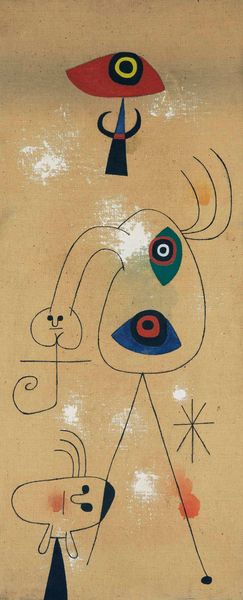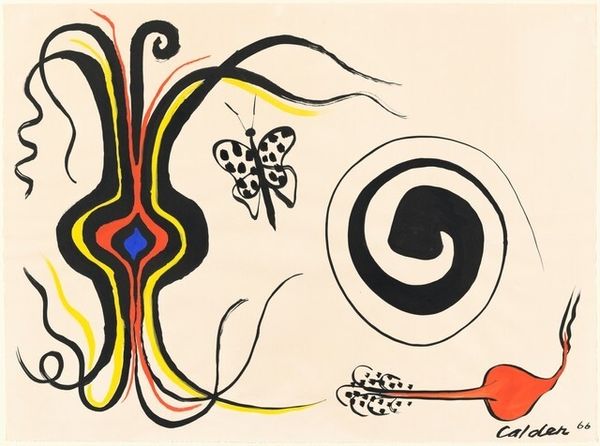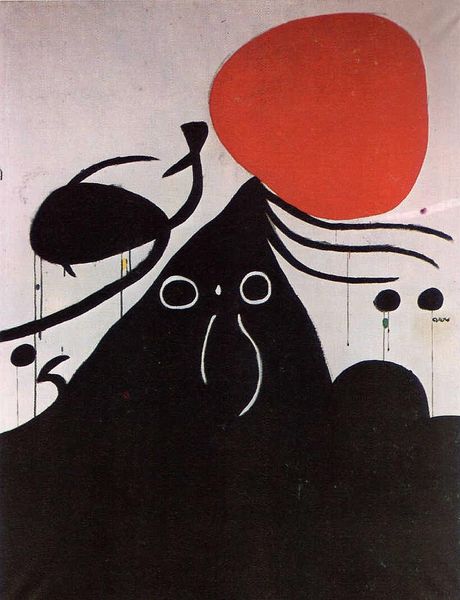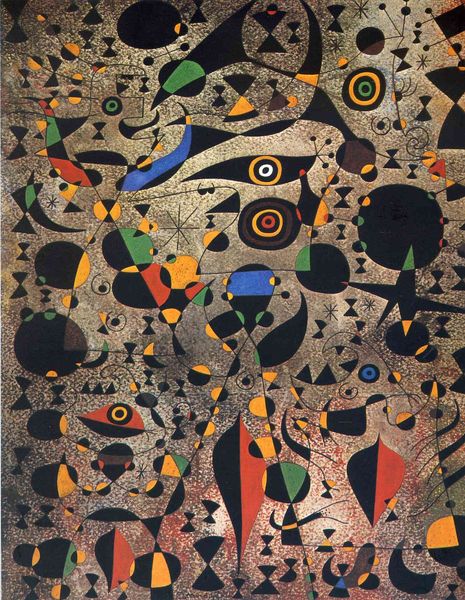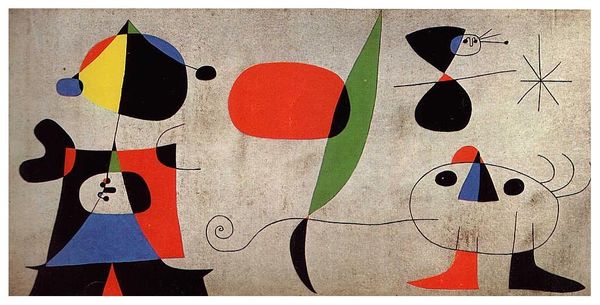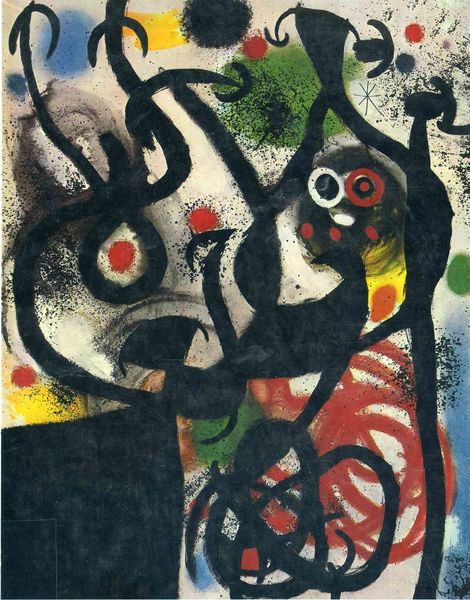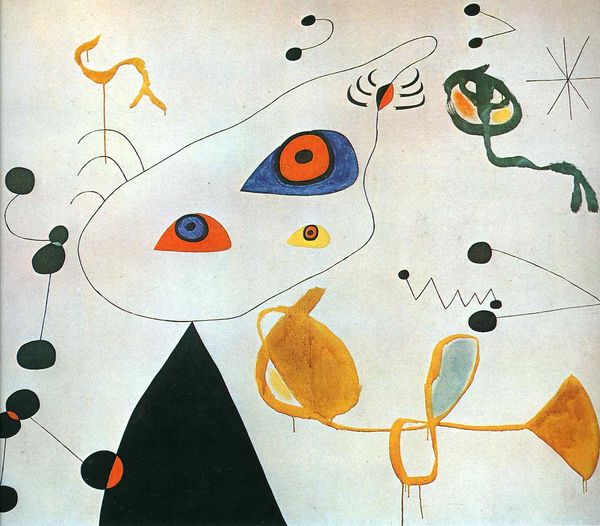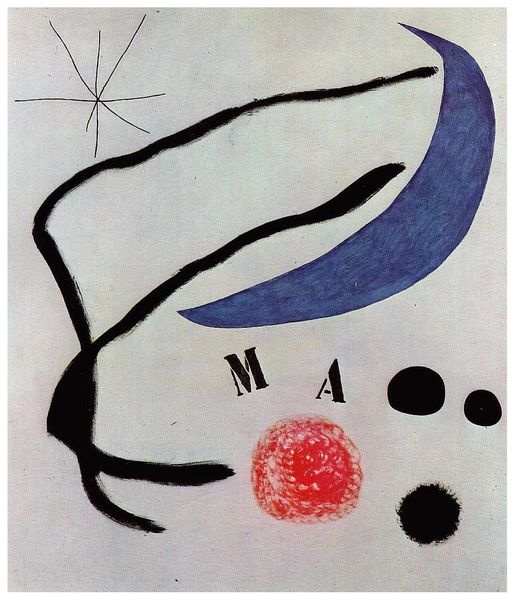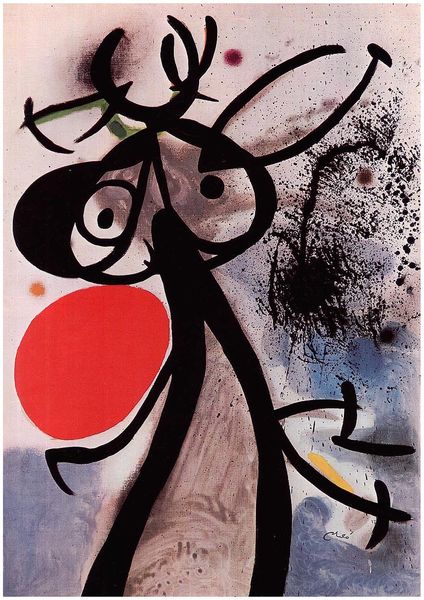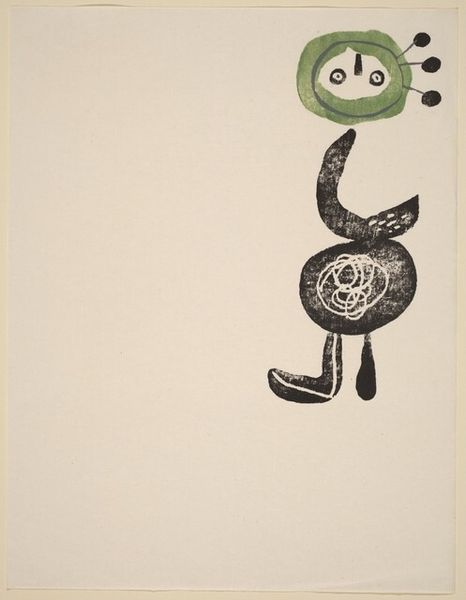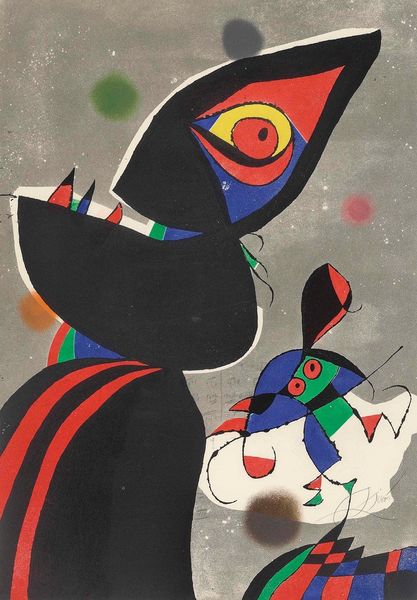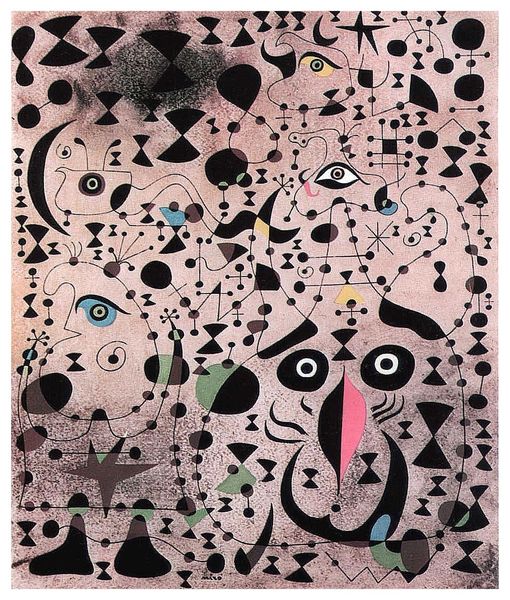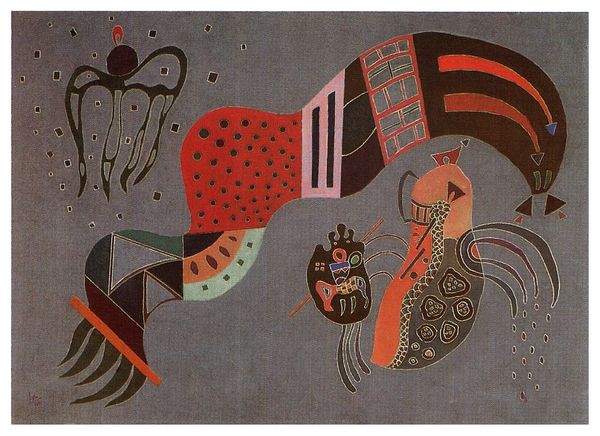
painting, acrylic-paint
#
painting
#
folk art
#
acrylic-paint
#
geometric
#
abstraction
#
surrealism
#
modernism
#
decorative art
Copyright: Joan Miro,Fair Use
Editor: This is Joan Miró’s "Woman and Bird in the Night," painted in 1945 using acrylic paint. I'm immediately struck by its dreamlike quality; the composition feels so free and unconstrained. What catches your eye when you look at this piece? Curator: Immediately, the interplay of form and color is striking. Consider how Miró arranges these seemingly simple shapes – the circles, lines, and geometric forms – to create a dynamic visual rhythm across the canvas. Notice also how the limited color palette, primarily blacks, greens, reds, and yellows, enhances this rhythm. The juxtaposition of these colors is vital, isn’t it? Editor: It is. But the forms, like the figure and the bird, while simple, seem to point to something more, some kind of narrative...or am I wrong? Curator: I would suggest caution on that interpretive path. While narrative might be suggested, focus, rather, on the formal elements. The black lines connecting the shapes create an interesting spatial tension. Are they merely decorative, or do they suggest a deeper structural logic? Editor: That's a good point. Looking at the “bird”, how its sharp, angular form contrasts with the softer curves of the “woman” really heightens the visual interest, and you start to understand it by thinking through these forms. Curator: Exactly. The painting resists easy interpretation and directs us, instead, to appreciate the pure aesthetics of its construction. Note how the dripping paint, left intentionally, disrupts any illusionistic space. Editor: I see. I had originally thought it was just about the figures. Curator: By focusing on its construction, we learn how Miró masterfully manipulates the elements of art to create a composition that is visually engaging and intellectually stimulating. It also suggests the work’s unique aesthetic autonomy, irrespective of external context. Editor: That’s made me rethink how I look at abstract art. Now, I'm eager to look for underlying structures in art, it makes everything feel more accessible.
Comments
No comments
Be the first to comment and join the conversation on the ultimate creative platform.

